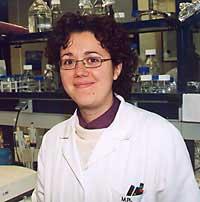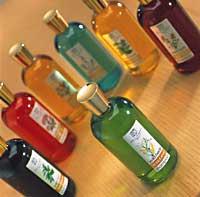Enzymes to facilitate the management of starch
2003/01/16 Atxotegi Alegria, Uhaina - Elhuyar Zientziaren Komunikazioa
Starch is used in biodegradable photographic films, adhesives, packaging materials, detergents, paints or plastics, as well as in medical products, shampoos, creams and lotions, detergents and cosmetics, and in food and beverages. Given the importance of starch in the industrial field, it is normal to carry out multiple investigations on the composition of starch, but so far not many studies have been carried out on the substance that prevents its synthesis.

Starch is a carbohydrate produced by the plants and its synthesis is made by the ADP glucose molecule. Researchers from the Public University of Navarra have identified two enzymes that degrade glucose. These two enzymes break the glucose molecule in the plants, preventing the formation of starch. Studies have been carried out on the barley leaf, a plant in which more enzymatic activities have been detected. According to the results obtained, various forms of these enzymes are responsible for the hydrolysis of glucose ADP, preventing the biosynthesis of starch. The control of this process and its possible application in the industry would facilitate the handling of starch.
Two enzymes have been identified
A family of enzymes is involved in the degradation of glucose. Milagros Rodríguez and her companions have identified two of these enzymes: NPP1 (Phosphatase Phosphodiesterase Nucleotide 1) and NPP2 (Phosphatase Phosphodiesterase Nucleotide 2).
www.ihobe.net

Gai honi buruzko eduki gehiago
Elhuyarrek garatutako teknologia






